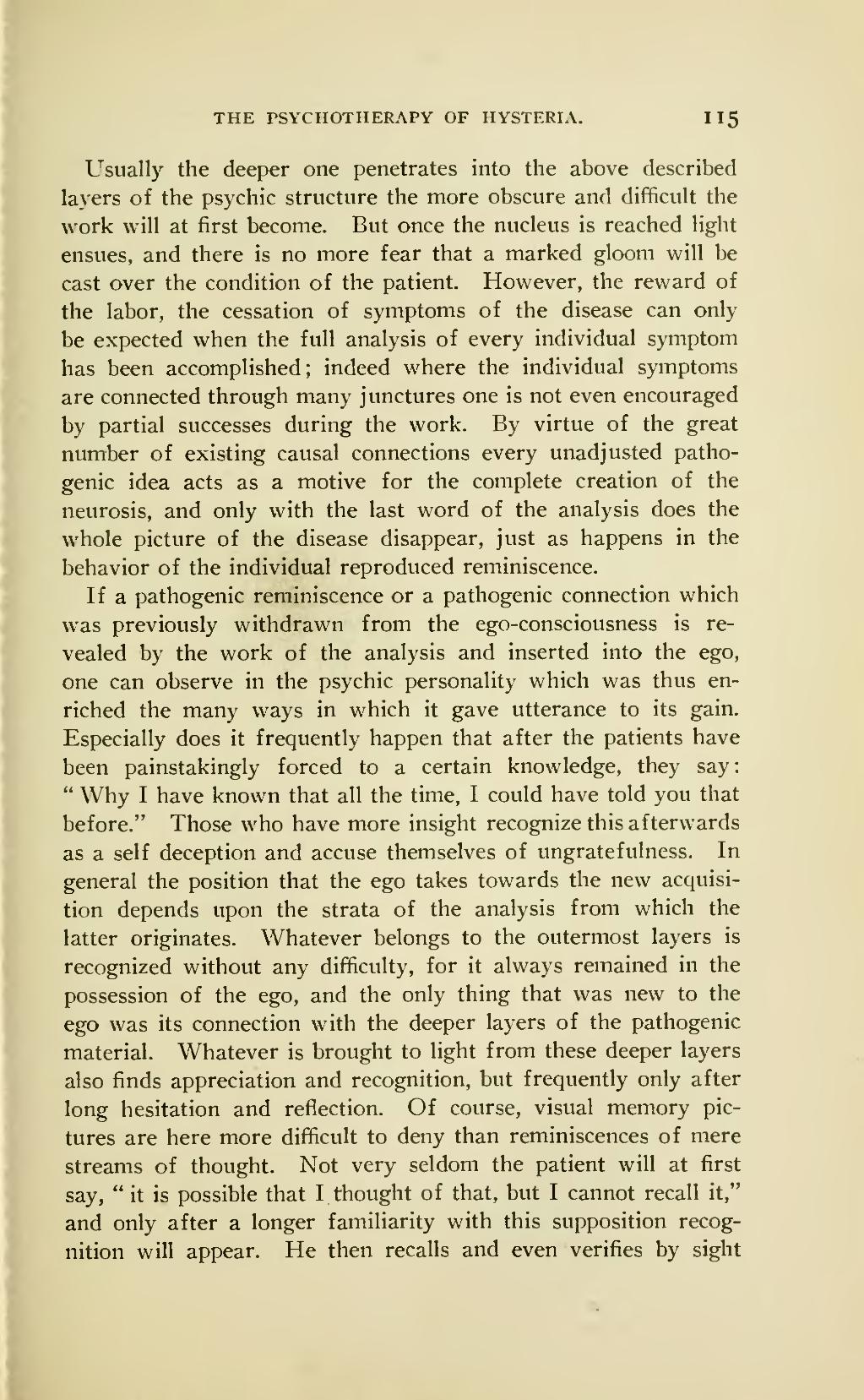Usually the deeper one penetrates into the above described layers of the psychic structure the more obscure and difficult the work will at first become. But once the nucleus is reached light ensues, and there is no more fear that a marked gloom will be cast over the condition of the patient. However, the reward of the labor, the cessation of symptoms of the disease can only be expected when the full analysis of every individual symptom has been accomplished; indeed where the individual symptoms are connected through many junctures one is not even encouraged by partial successes during the work. By virtue of the great numher of existing causal connections every unadjusted pathogenic idea acts as a motive for the complete creation of the neurosis, and only with the last word of the analysis does the whole picture of the disease disappear, just as happens in the behavior of the individual reproduced reminiscence.
If a pathogenic reminiscence or a pathogenic connection which was previously withdrawn from the ego-consciousness is revealed by the work of the analysis and inserted into the ego, one can observe in the psychic personality which was thus enriched the many ways in which it gave utterance to its gain. Especially does it frequently happen that after the patients have been painstakingly forced to a certain knowledge, they say: " Why I have known that all the time, I could have told you that before." Those who have more insight recognize this afterwards as a self deception and accuse themselves of ungratefulness. In general the position that the ego takes towards the new acquisition depends upon the strata of the analysis from which the latter originates. Whatever belongs to the outermost layers is recognized without any difficulty, for it always remained in the possession of the ego, and the only thing that was new to the ego was its connection with the deeper layers of the pathogenic material. Whatever is brought to light from these deeper layers also finds appreciation and recognition, but frequently only after long hesitation and reflection. Of course, visual memory pictures are here more difficult to deny than reminiscences of mere streams of thought. Not very seldom the patient will at first say, "it is possible that I, thought of that, but I cannot recall it," and only after a longer familiarity with this supposition recognition will appear. He then recalls and even verifies by sight
